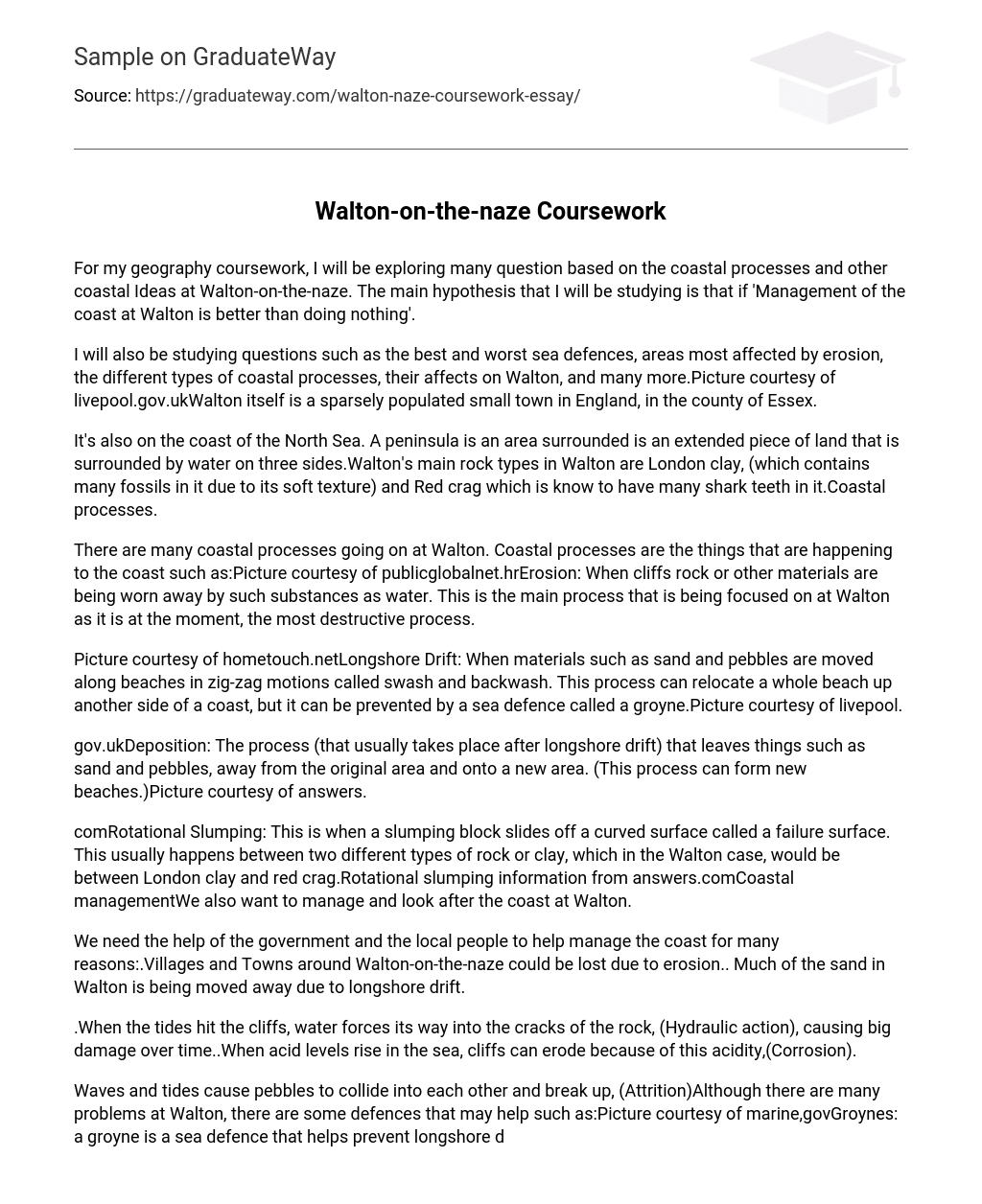For my geography coursework, I will be exploring many question based on the coastal processes and other coastal Ideas at Walton-on-the-naze. The main hypothesis that I will be studying is that if ‘Management of the coast at Walton is better than doing nothing’.
I will also be studying questions such as the best and worst sea defences, areas most affected by erosion, the different types of coastal processes, their affects on Walton, and many more.Picture courtesy of livepool.gov.ukWalton itself is a sparsely populated small town in England, in the county of Essex.
It’s also on the coast of the North Sea. A peninsula is an area surrounded is an extended piece of land that is surrounded by water on three sides.Walton’s main rock types in Walton are London clay, (which contains many fossils in it due to its soft texture) and Red crag which is know to have many shark teeth in it.Coastal processes.
There are many coastal processes going on at Walton. Coastal processes are the things that are happening to the coast such as:Picture courtesy of publicglobalnet.hrErosion: When cliffs rock or other materials are being worn away by such substances as water. This is the main process that is being focused on at Walton as it is at the moment, the most destructive process.
Picture courtesy of hometouch.netLongshore Drift: When materials such as sand and pebbles are moved along beaches in zig-zag motions called swash and backwash. This process can relocate a whole beach up another side of a coast, but it can be prevented by a sea defence called a groyne.Picture courtesy of livepool.
gov.ukDeposition: The process (that usually takes place after longshore drift) that leaves things such as sand and pebbles, away from the original area and onto a new area. (This process can form new beaches.)Picture courtesy of answers.
comRotational Slumping: This is when a slumping block slides off a curved surface called a failure surface. This usually happens between two different types of rock or clay, which in the Walton case, would be between London clay and red crag.Rotational slumping information from answers.comCoastal managementWe also want to manage and look after the coast at Walton.
We need the help of the government and the local people to help manage the coast for many reasons:.Villages and Towns around Walton-on-the-naze could be lost due to erosion.. Much of the sand in Walton is being moved away due to longshore drift.
.When the tides hit the cliffs, water forces its way into the cracks of the rock, (Hydraulic action), causing big damage over time..When acid levels rise in the sea, cliffs can erode because of this acidity,(Corrosion).
Waves and tides cause pebbles to collide into each other and break up, (Attrition)Although there are many problems at Walton, there are some defences that may help such as:Picture courtesy of marine,govGroynes: a groyne is a sea defence that helps prevent longshore drift. It prevents longshore drift by breaking up the swash and backwash motion. They are large and usually made of wood or concrete. A main downside to them is that they stop some sand being naturally transferred to the other side of the coast.
Some people complain that they are visually polluting too.Picture courtesy of commons.wikimedia.netRip-Rap: rip-rap is a sea defence that is used to prevent hydraulic action and to stop the energy of a wave that is about to hit the coast.
It is helpful but many complain that it visually pollutes.Picture courtesy of 3dterrain.comSea walls: a sea wall is a defence that is used to stop waves hitting a coast. They are sometimes curved so that they can reflect the power of a tide.
Most people living in Walton think that sea walls are the worst visual polluters out of the three sea defences.Although many people complain about some of the defences, they are helping the naze in many ways. Even though most methods have at least 1 negative effect.





